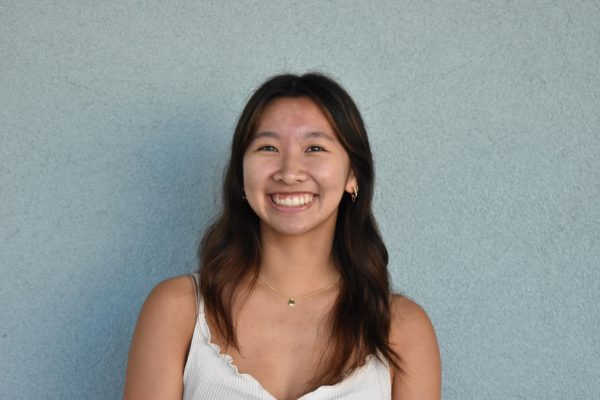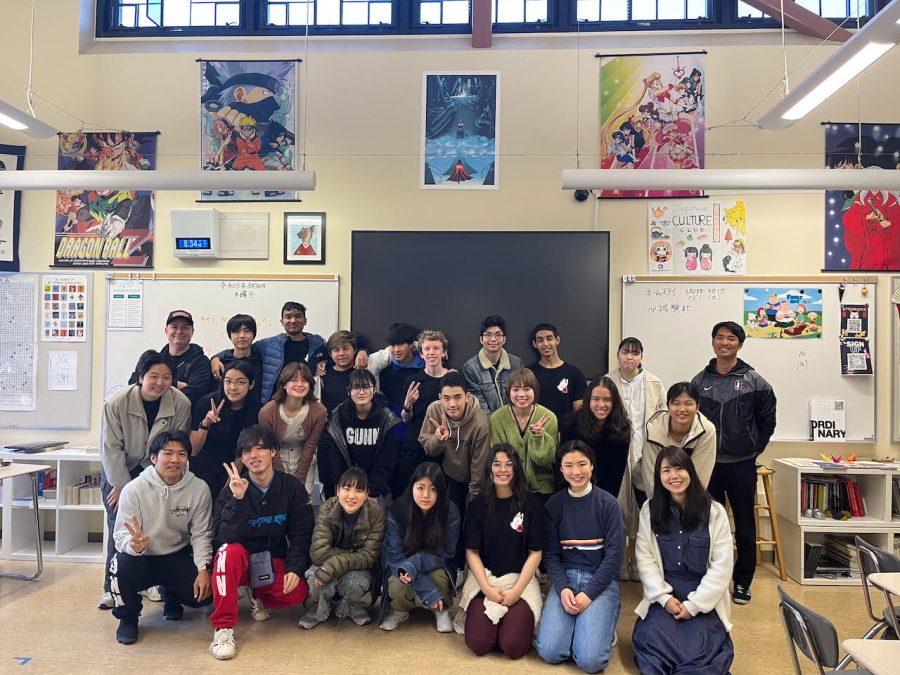Gunn hosts exchange students from Japan
“I want to see a country other than Japan with my own eyes.” “I want to eat a lot of meat.” “I want to make lots of friends and talk a lot.”
Such were the thoughts of ten Japanese students as they boarded a plane for America on March 25. Meanwhile, ten Gunn students cleared an extra room in each of their homes in preparation for Gunn’s first Japanese homestay program. The program, organized by Japanese teacher Matthew Hall in conjunction with Masaki Nakamura from the Terakoya Program, sought to provide students from various Japanese high schools with the opportunity to follow Gunn students through school and their daily life for three days, as well as attend tours of Google, Apple and Stanford campuses.
Although Advanced Placement Japanese students were given priority, Hall opened participation in the program to all levels of students in Gunn’s Japanese program as a chance to learn more about the language and culture they had been studying. “It’s one thing to learn in the classroom, (and) it’s another thing to learn from the person sitting right next to you,” he said. “It’s always good when people from another country break bread together. There’s a phrase that says, ‘It’s harder to hate somebody when you know their story.’ We need to learn their stories and they need to learn our stories.”
To teach her exchange student, Moka Higashihira, more about American culture, junior Emma Cao brought her to a variety of places and provided her with foods unique to the area. “Yesterday night, we went downtown, and she said it reminded her of a place in Japan,” Cao said. “Tonight we plan on going to Santana Row, so she can do some shopping. It’s been nice to reflect on being grateful for the place we live in and also explain its history.”
Since neither are fluent in the other’s language, however, Cao explained that certain challenges arose in communication. “I do wish I could speak to her in Japanese more fluently, so we can get on that level,” she said. “When you’re not speaking in your native language, you’re not really the same person, so that’s kind of a barrier in our personalities.” Cao also noted that these challenges extended to nonverbal communication. “When Japanese exchange students come, they tend to be very polite about things,” she said. “Even if they don’t like something, they’ll do it and won’t tell you that they don’t like it. It’s been hard to try and tell what they actually want (and) how to read the cues and body language.”
Nevertheless, Cao learned to overcome communication barriers with English-to-Japanese translation tools such as Jisho and Google Translate. She was also able to improve her speaking abilities through conversing with Higashihira. “I’m really grateful for this opportunity because I get to learn a lot of slang and casual phrases,” she said. “Like ‘traffic’ in Japanese is ‘kotsu,’ but they don’t say ‘kotsu ga warui’ (the traffic is bad). Instead, they use the phrase ‘michi ga konde iru’ (the roads are crowded).”
Similarly, the program served as a learning experience for both the Japanese and Gunn students to examine the differences between Japanese and American culture. For instance, senior Talise Baker-Matsuoka’s exchange student, Sawako Akasaka, noticed that Gunn’s school environment differed from that of her school in Japan. “American classes have much freedom,” she said. “I can eat snacks and drinks, (which is) different from (in) Japan. Also, in (Japanese schools) we have one big building, and that’s it. In America, you have many buildings and students move around between them and it takes time to do so.”
Baker-Matsuoka realized differences regarding food and eating habits as well. “Americans are often like, ‘Here’s the fridge, go eat all the food,’ but Japanese people won’t just go eat your food if you don’t give it to them,” she said. “Also, one thing you do in Japan is you have to clear your plate completely, but in the U.S., you don’t have to do that. We’re used to piling food on top and then having leftovers, but in Japan, you eat everything.”
Overall, learning new things about American culture through the homestay program was an exciting experience for junior Maya Nieman’s Japanese student, Iwata Sae. Her favorite part in particular was eating American fast food. “There’s a lot of fast-food eating,” she said. “In Japan, we have McDonalds and Kentucky Fried Chicken, but we’ll maybe eat it once every two weeks. I like the food very much here.”
Your donation will support the student journalists of Henry M. Gunn High School. Your contribution will allow us to purchase equipment and cover our annual website hosting costs.

Senior Kaitlyn Chen is a lifestyle editor for The Oracle. Outside of school, she enjoys dancing, hiking and discovering new music artists.




